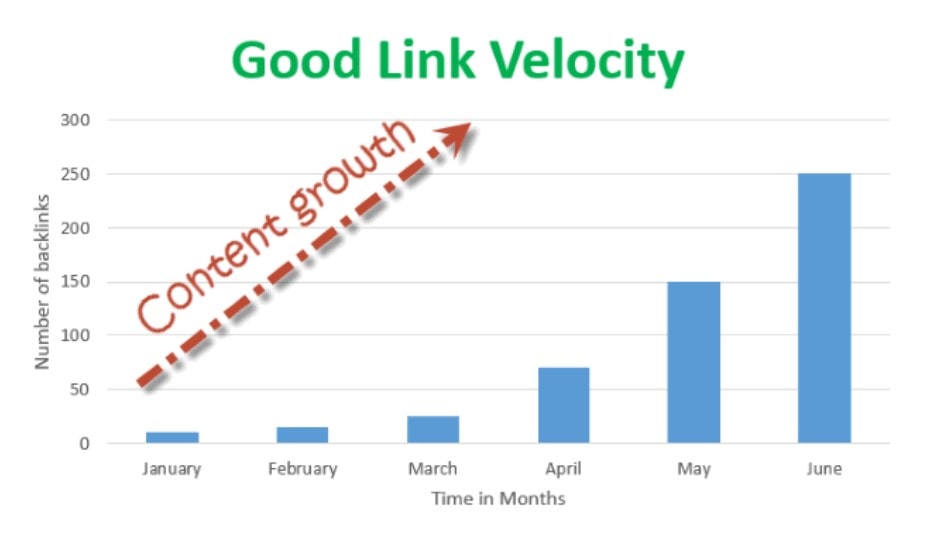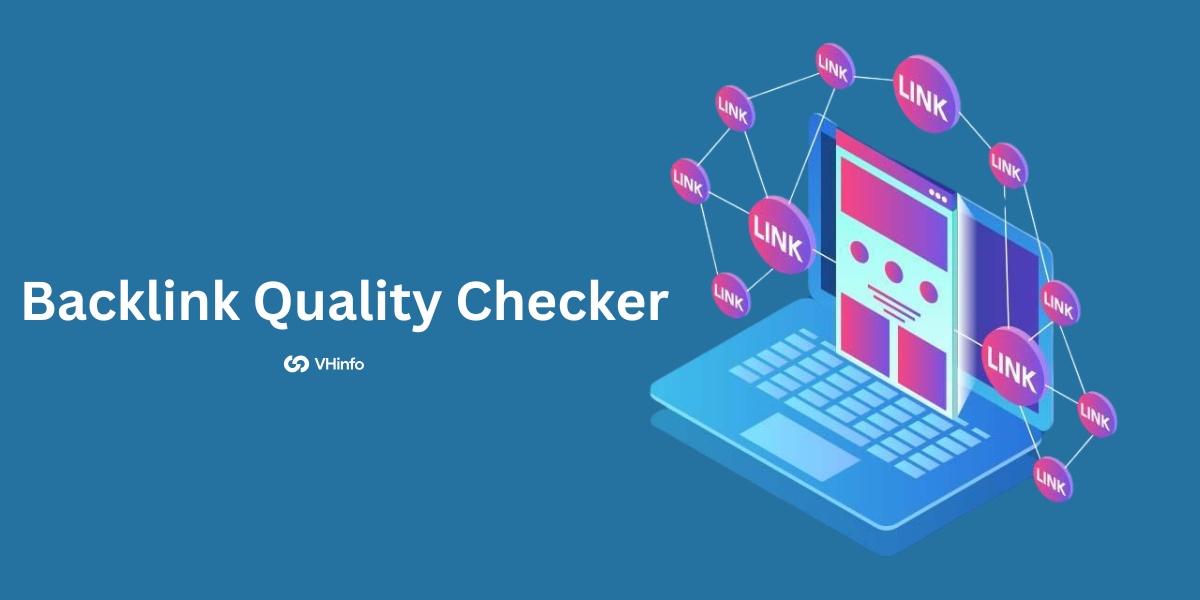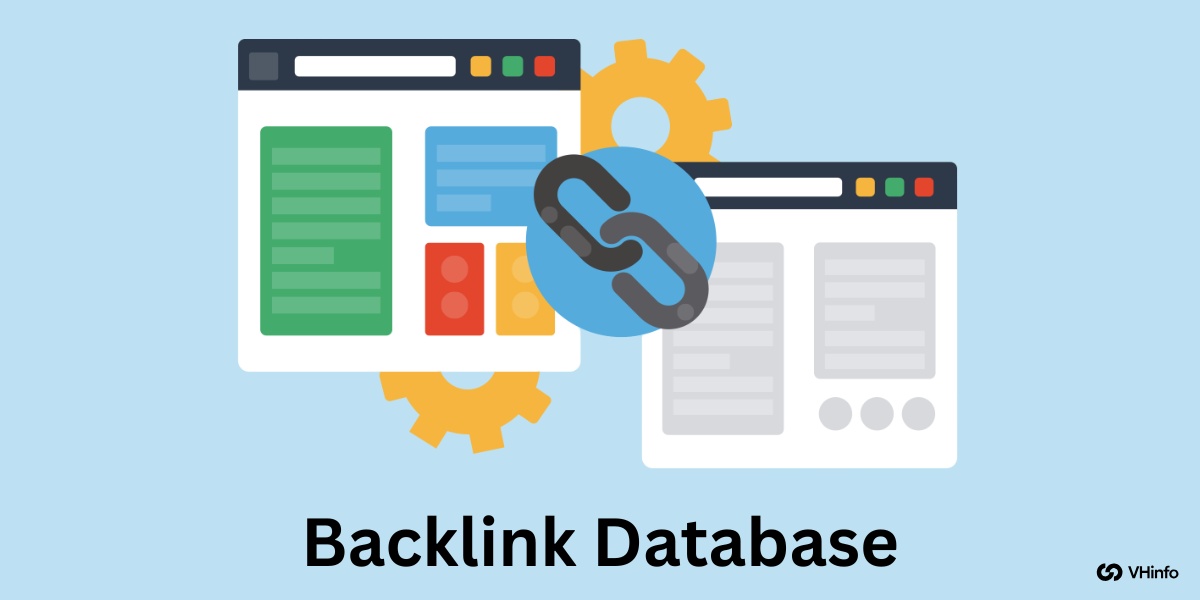Link velocity, a critical concept in the world of search engine optimization (SEO), refers to the speed at which a website acquires backlinks over a specific period.
As a SaaS company, understanding and optimizing your link velocity is essential for improving your search engine rankings and driving targeted traffic to your site.
In this comprehensive guide, we’ll dive deep into link velocity, its importance, and how VH-info can help you achieve a healthy link-building strategy.
What is Link Velocity?

Link velocity measures the rate at which a website gains new backlinks over time. It’s an important metric that search engines like Google use to evaluate the quality and relevance of a site’s link profile.
A steady, natural link velocity indicates that a website is earning links organically, while a sudden spike or drop in link velocity may signal manipulative link-building techniques. Understanding and monitoring a site’s link velocity is important for maintaining a healthy and natural backlink profile.
Why Does Link Velocity Matter?
Link velocity matters because it provides valuable insights into the health and effectiveness of your link building efforts. A consistent, positive link velocity suggests that your content is resonating with your target audience and earning links naturally.
On the other hand, an erratic or negative link velocity may indicate issues with your SEO strategy or even a potential negative SEO attack.
Is Link Velocity Important For SEO?

Yes, link velocity is an important factor in SEO. While it may not be a direct ranking factor, it influences how search engines perceive your website’s authority and relevance.
A natural, steady link velocity can help improve your search engine rankings, drive targeted traffic, and establish your site as a trusted resource in your industry. This can ultimately lead to higher placement in search engine results pages (SERPs).
What is an Ideal Link Velocity?

The ideal link speed differs based on industry, competition, and website age.
Aiming for steady growth in quality backlinks is crucial for maintaining a healthy SEO profile. Sudden spikes or drops in backlink acquisition can trigger search engine penalties, impacting your website’s ranking and visibility.
It is essential to focus on building natural and relevant backlinks over time, as this indicates to search engines that your site offers valuable content worth linking to.
Types Of Link Velocity
- Positive Link Velocity: A steady increase in high-quality backlinks over time, indicating a successful link building strategy.
- Negative Link Velocity: A sudden drop in backlinks, which may signal a problem with your SEO strategy or a negative SEO attack.
- Erratic Link Velocity: Inconsistent fluctuations in link growth, which may raise red flags with search engines and hinder your SEO efforts.
What is a Good Link Velocity?
A good link velocity is one that appears natural and organic to search engines. It should be a steady, gradual increase in high-quality backlinks from relevant, authoritative sources. The exact number of links you should aim for depends on your industry and competition, but as a general guideline, aim for a 10-20% increase in backlinks per month to find the sweet spot for optimal PageRank.
Virality & The Importance Of Quickly-Appearing Links
In some cases, a sudden spike in link velocity can be a positive sign, particularly if your content goes viral.
When a piece of content generates a lot of buzz and earns a high number of backlinks in a short period, it can significantly boost your search engine rankings. However, it’s essential to ensure that these links come from reputable sources and are relevant to your content.
PageRank
PageRank, Google’s algorithm for measuring the importance of web pages, takes into account the number and quality of links pointing to a page. A higher link velocity can positively impact your PageRank, as it indicates that your content is valuable and worth linking to.
However, it’s important to focus on earning high-quality, relevant links rather than simply aiming for a high quantity of links.
Linking Out
Linking out to other reputable websites can also contribute to a healthy link velocity.
This, in turn, can encourage other websites to link back to your content, improving your link velocity and overall SEO performance.
The Power (And Danger) Of Reciprocal Links
Reciprocal linking, or the practice of exchanging links with other websites, can be a double-edged sword when it comes to link velocity.
While reciprocal links can help increase your link velocity, they can also appear unnatural to search engines if done excessively or with low-quality websites.
Focus on building reciprocal links with reputable, relevant sites in your industry, and avoid engaging in large-scale link exchanges.
Is Link Velocity An SEO Ranking Factor?
While link velocity itself is not a direct ranking factor, it does influence how search engines perceive your website’s authority and relevance. A healthy link velocity, which can be controlled by website owners, can indirectly improve your search engine rankings by signaling to Google that your content is valuable and worth linking to. However, it’s essential to focus on building high-quality, relevant links rather than simply aiming for a high link velocity.
If I Build Backlinks Too Fast, Will My SEO Ranking Suffer?
Building backlinks too quickly can indeed negatively impact your SEO rankings. Search engines like Google are wary of websites that acquire a large number of links in a short period, as this may indicate manipulative link building practices. If your link velocity is too high, you risk triggering search engine penalties and damaging your SEO performance. When determining how to reach a higher link velocity, it’s important to look at your SEO metrics and historical data. The more links you earn, the faster you can feel comfortable building them.
Is There a “Perfect” Velocity For Building Links? The Best Strategy Around Link Velocity
There is no “perfect” link velocity that guarantees SEO success. The ideal link velocity varies depending on factors like your industry, competition, and the age of your website. However, the best strategy is to focus on building high-quality, relevant links consistently over time. Aim for a steady, gradual increase in backlinks, and avoid sudden spikes or drops in link velocity, as an optimal link velocity is one that is consistent and natural-looking.
How to Check Link Velocity For a Website or Page?
To check your website’s link velocity, you can use various SEO tools like Ahrefs, Moz, or SEMrush. These tools provide detailed insights into your backlink profile, including the number of new links acquired over a specific period.
What Does Google Say About Link Velocity?
While Google has not explicitly stated that link velocity is a ranking factor, the search engine giant has emphasized the importance of building high-quality, natural links over time.
Google’s Penguin algorithm, which targets manipulative link building practices, has been known to penalize websites with unnatural link velocity patterns. This underscores the importance of focusing on a sustainable, organic link building strategy.
What Are Some Best Practices For Maintaining a Healthy Link Velocity?
- Focus on creating valuable, link-worthy content that naturally attracts backlinks.
- Build relationships with influencers and thought leaders in your industry to earn high-quality links.
- Monitor your backlink profile regularly to identify and address any potential issues.
- Diversify your link building strategies to avoid over-reliance on any single tactic.
- Aim for a steady, gradual increase in backlinks over time, rather than sudden spikes or drops.
How To Avoid Google Penalties With Link Velocity?
To avoid Google penalties related to link velocity, follow these best practices:
- Focus on earning high-quality, relevant links from authoritative sources.
- Avoid engaging in manipulative link building practices like link farms or excessive reciprocal linking.
- Monitor your link velocity regularly and address any sudden spikes or drops.
- Diversify your link building strategies to maintain a natural, organic link profile.
- Disavow any low-quality or spammy links pointing to your website.
Examples Of Link Velocity in Action
- A SaaS company consistently publishes valuable, informative blog posts and earns a steady stream of high-quality backlinks over time, resulting in a positive link velocity and improved search engine rankings.
- An e-commerce website engages in manipulative link building practices, resulting in a sudden spike in link velocity. This triggers a Google penalty, causing a significant drop in search engine rankings and organic traffic.
- A startup launches a viral marketing campaign that generates a large number of backlinks in a short period. While this results in a temporary boost in search engine rankings, the link velocity eventually stabilizes, and the website maintains its improved rankings through a sustainable link building strategy.
FAQ’s:
What Are Link Velocity Trends?
Link velocity trends refer to the patterns and changes in a website’s link velocity over time. By analyzing these trends, SEO professionals can gain insights into the effectiveness of their link building strategies and identify potential issues or opportunities for improvement.
Is Link Velocity a Direct Ranking Factor?
No, link velocity is not a direct ranking factor. However, it does influence how search engines perceive your website’s authority and relevance, which can indirectly impact your search engine rankings.
Can High Link Velocity Negatively Impact SEO?
Yes, an excessively high link velocity can negatively impact your SEO performance. Search engines may interpret a sudden spike in link velocity as a sign of manipulative link building practices, which can result in penalties and a drop in rankings.
Are All Backlinks Considered in Link Velocity?
No, not all backlinks are considered equal when it comes to link velocity. Search engines place more value on high-quality, relevant links from authoritative sources, while low-quality or spammy links may have little to no impact on your link velocity.
Are There Seasonal Variations in Link Velocity?
Yes, there can be seasonal variations in link velocity depending on your industry and the nature of your content.
For example, a website that focuses on holiday gift guides may experience a spike in link velocity during the holiday season, while a website that covers summer travel destinations may see an increase in link velocity during the spring and summer months.
Can a Sudden Drop in Link Velocity Affect Website Rankings?
Yes, a sudden drop in link velocity can negatively impact your website’s search engine rankings. This may indicate a problem with your link building strategy, such as a loss of high-quality backlinks or a manual penalty from Google.
Should I Consider Hiring an Agency to Manage Link Velocity?
If you lack the time, resources, or expertise to manage your link velocity effectively, consider partnering with a reputable SEO agency like VH-info. Our team of experienced professionals can help you develop and execute a sustainable link building strategy that drives results while maintaining a healthy link velocity.
Can Link Velocity Be Used in Combination with Other SEO Metrics to Improve a Website’s Ranking?
Yes, link velocity should be used in combination with other SEO metrics to create a comprehensive, data-driven SEO strategy. By analyzing link velocity alongside factors like domain authority, keyword rankings, and organic traffic, you can gain a holistic view of your website’s SEO performance and identify areas for improvement.
How Do Search Engines Like Google Perceive Sudden Spikes in Link Velocity?
Search engines like Google are wary of sudden spikes in link velocity, as they may indicate manipulative link building practices.
If your website experiences a sharp increase in backlinks over a short period, Google may interpret this as an attempt to artificially inflate your search engine rankings, which can result in penalties and a drop in rankings.
How Can One Increase Link Velocity Organically?
To increase link velocity organically, focus on creating high-quality, valuable content that naturally attracts backlinks from authoritative sources.
Engage in outreach and relationship-building with influencers and thought leaders in your industry, and promote your content through social media and other channels to increase its visibility and reach.
Conclusion
Link velocity is a critical concept in the world of SEO, playing a significant role in how search engines perceive your website’s authority and relevance.
At VH-info, we specialize in helping SaaS companies navigate the complexities of SaaS Link building , white label link building services and SEO for startups. Our team of experienced professionals can help you develop and execute a sustainable link building strategy that drives results while maintaining a healthy link velocity.
Contact us today to learn more about how we can help you achieve your SEO goals and take your online presence to the next level.



